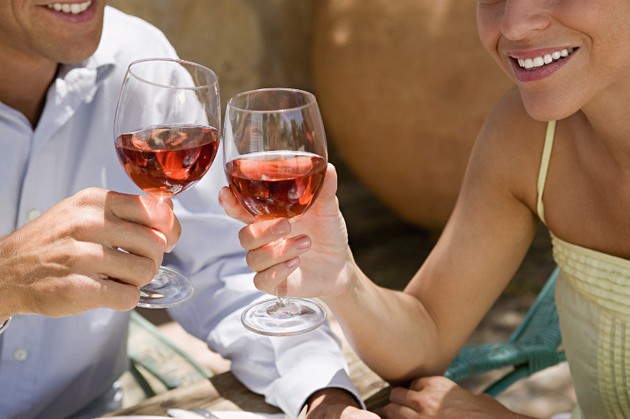
Premium rosé packs a punch at Vinisud
Provence has long established itself as the darling of rosé of production – pale, pink, dry, with quaffable delicate fruits and a commercially-proven track record which has seen its flagship style imitated by most pink-producing regions across the world.
But evidence suggests winemakers are now focusing more of their energies into higher quality rosés, with darker styles providing a niche in a category which has to clamoured largely to replicate Provence’s success with its largely affordable and consumer-friendly profile.
Liz Gabay MW, author of Rose: Understanding the Pink Wine Revolution, says that while France is still the leader in terms of quality rosé production, growth is also coming from places like Hungary, Turkey, Greece, Australia, Italy and Spain, with great results coming from experimentation with natural yeasts, aging in amphora, barrel aging and long skin contact to produce darker styles.
Rosé’s share of worldwide wine consumption has been climbing steadily over the past 15 years, from 7.8% in 2002 to 9.7% in 2016 (growth of almost a quarter according to CIVP figures) which is impressive considering the largely static world wine consumption that has characterised the new millennium.
But despite the growing enthusiasm of the industry to experiment with rosé, there persists a reluctance to rock the boat, with barriers to more interesting, premium styles coming from both the trade and consumers.
“All of the things we associate with good reds and whites – complexity, length, good aging ability – all those things are the same with good rosés. But getting people to see that is difficult,” said Gabay.
“A quality rosé requires the same expertise as a red. If you’re a producer, and you know people won’t pay the same price, you end up thinking ‘why bother?’ ”

Another issue says Gabay is getting producers to believe in the aging potential of their rosés and communicating this to consumers.
Examples of this were evident at Vinisud in Montpellier this week, where the 2017 wines from Tavel were being poured before the 2016s.
“The Tavel wines age beautifully,” said Gabay. “But when I talk to producers, they say that buyers want the most recent release; then when I talk to buyers, they say it’s consumers that want it. It’s a little bit like pandering to a child.
“When it comes to rosé, there is very little guidance to the consumer, or confidence to say ‘I’m an expert and I can tell you this wine is better with age’.”
Gabay says she is disappointed with the selections in the on-trade currently, where buyers are more conservative with rosé choices – citing consumer preference as the reason for not being bold with lists, although they rarely get the opportunity to taste these wines in the first place.
Rather, it is independent wine merchants or small shippers who are looking for rosés that are “defining and different”, with London’s H2Vin and Thirty Nine 10 in St Albans receiving shout-outs from Gabay for their experimental lists.
A general caution about showing these more artistic wines persists, and for the moment, premium or artisanal rosés still rely on word of mouth – even within the trade.
At two of her rosé-focused masterclasses at Vinisud, Gabay said participants were still drawn to the popular Provence-typical styles: “Over the past 20 years, winemakers have mastered how to make good rosé, which has provided a solid foundation. Around 90% of production is commercial rosé and 10% is chance to play and be artistic – not just in France, but all over. At the moment, rosés are being dismissed because they are not the classic Provence style, but I think we will these styles becoming more recognised for their point of difference.”
“Even the Provençal are feeling it,” she added. “When Provenance rosé exploded around 2007, it hit world by storm because the style was unique in a world of clumsy rosé production. Now everyone is copying it, producers are saying ‘how do we be unique again?’ It’s a real problem.”
Along with other styles of wine, rosé has also become more international in recent years – with rosé also managing in part to break away from its summer–only niche.
In 2002, 22% of worldwide rosé production was exported, rising to 38% in 2017; however, the majority is still consumed in the country which produced it.
“Domestic markets, with their local traditions, are important,” said Gabay. “[Worldwide] demand for rosé is also growing strongly, especially in the US, and having a big effect round the world, not just with women as people like to assume, but with men too who want a light but still complex alternative to red in the summer.”
Light and dark styles of rosé at the Wine Mosaic stand at Vinisud 2018
Keywords:
- wine
- US
- Rosé
- styles
- wine consumption
- gabay
- rosés
- rosé production
- darker styles
- quality rosé
- tavel
- CIVP




